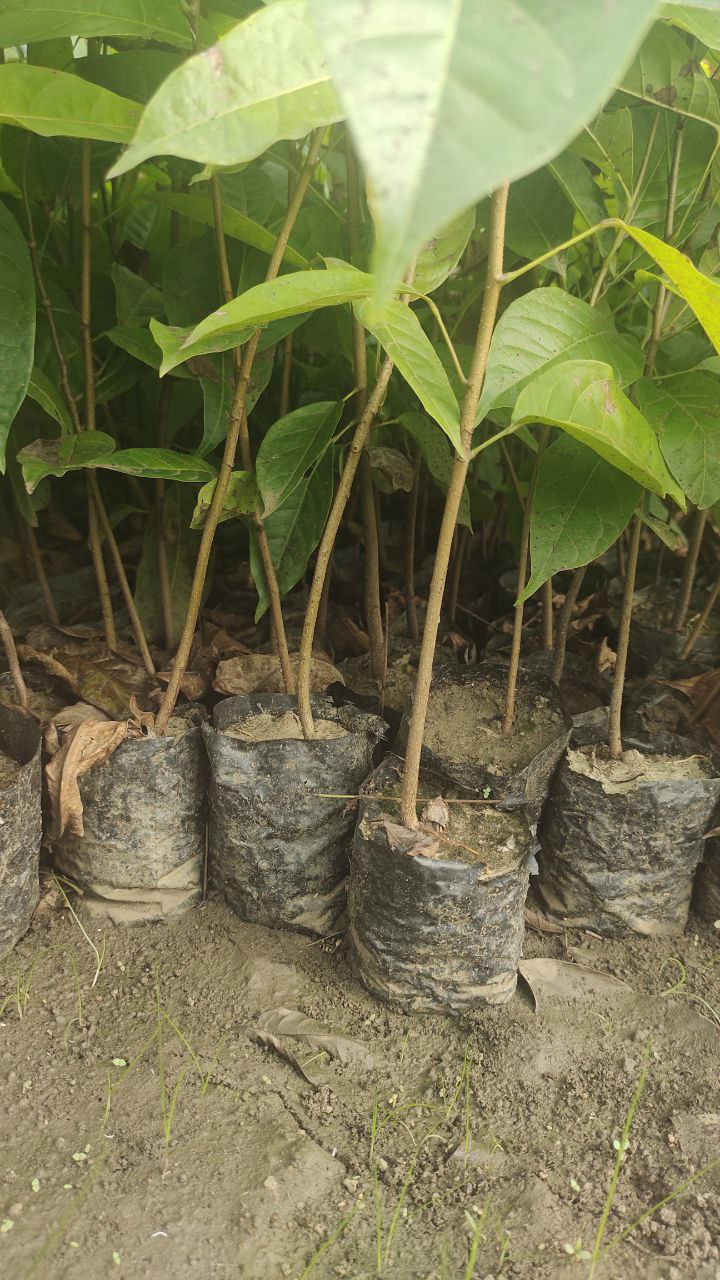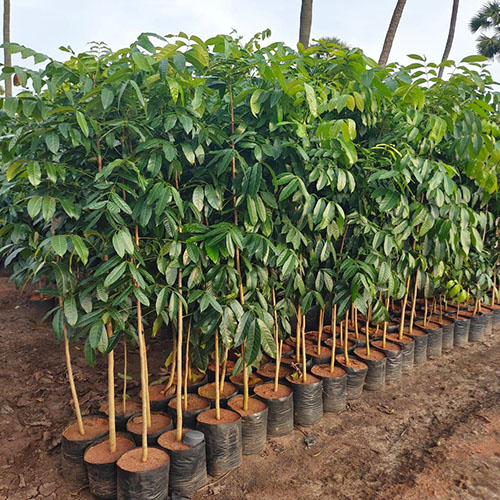African Mahogany Plants
African Mahogany refers to several tree species within the Meliaceae family, primarily found in tropical Africa. The most well-known species include Khaya ivorensis, Khaya senegalensis, Khaya anthotheca, and Khaya grandifoliola. These trees are valued for their high-quality timber, which is widely used in furniture, cabinetry, and boat building due to its attractive grain, durability, and resistance to pests.
Key Features of African Mahogany:
-
Appearance:
- Height: African Mahogany trees are large, often growing up to 30-40 meters tall, with some species reaching heights of up to 60 meters.
- Leaves: The leaves are compound, usually arranged in a pinnate fashion with 4-6 pairs of leaflets. The leaves are glossy, dark green, and can be up to 30 cm long.
- Bark: The bark is rough and gray-brown, often peeling in patches.
- Flowers and Fruits: These trees produce small, white to yellowish flowers that are often fragrant. The fruit is a woody capsule that splits open when mature to release seeds.
-
Growth Conditions:
- Climate: African Mahogany thrives in tropical climates with temperatures ranging from 20°C to 30°C. It requires high humidity and a significant amount of rainfall, typically between 1,200 to 2,500 mm annually.
- Soil: Prefers deep, well-drained soils such as sandy loam or loamy soils with good fertility. It is adaptable to a range of soil types but does not tolerate waterlogged or poorly drained soils.
-
Propagation:
- Seeds: African Mahogany is commonly propagated by seeds. Seeds should be collected from ripe fruits and sown fresh, as their viability decreases rapidly. Seedlings are typically grown in nurseries before being transplanted to the field.
- Cuttings and Grafting: Vegetative propagation through cuttings and grafting is also possible but less common.
-
Growth Requirements:
- Sunlight: Full sunlight is ideal for the growth of African Mahogany. It can also tolerate partial shade, especially in the early stages of growth.
- Watering: Regular watering is required in the initial stages, especially in dry seasons. Once established, the tree is relatively drought-tolerant but benefits from additional watering during prolonged dry periods.
-
Harvesting:
- Timber: The tree is primarily grown for its valuable timber, which can be harvested after 25 to 30 years when grown in plantations. In natural forests, harvesting may occur when trees are much older.
- Non-timber Products: The bark, seeds, and leaves are sometimes used in traditional medicine.
-
Uses:
- Timber: The wood is used for furniture, cabinetry, veneers, paneling, flooring, and boat building. It is known for its rich reddish-brown color, fine texture, and durability.
- Traditional Medicine: In some African cultures, various parts of the tree are used to treat ailments such as malaria, fever, and diarrhea.
- Environmental Benefits: African Mahogany is also planted for reforestation and agroforestry projects, as it provides shade, improves soil quality, and contributes to biodiversity.
-
Conservation and Management:
- Sustainable Practices: Due to its high demand and over-harvesting in some regions, sustainable forestry practices and regulations are essential to prevent depletion of natural stands. Reforestation and plantation initiatives are increasingly important to ensure a steady supply of this valuable timber.
If you need more detailed information or have specific questions about African Mahogany, feel free to ask!

.jpg)
.jpg)


